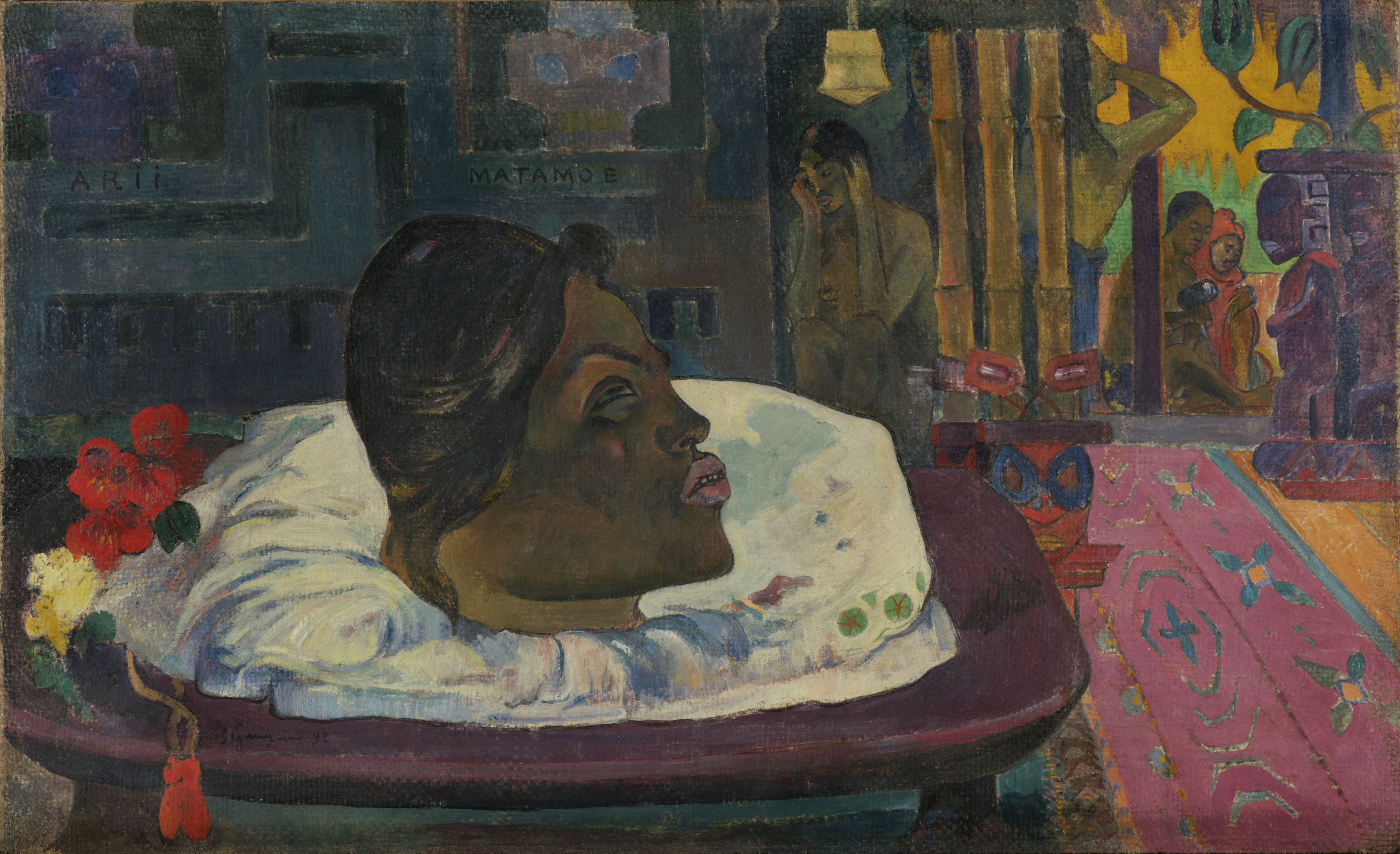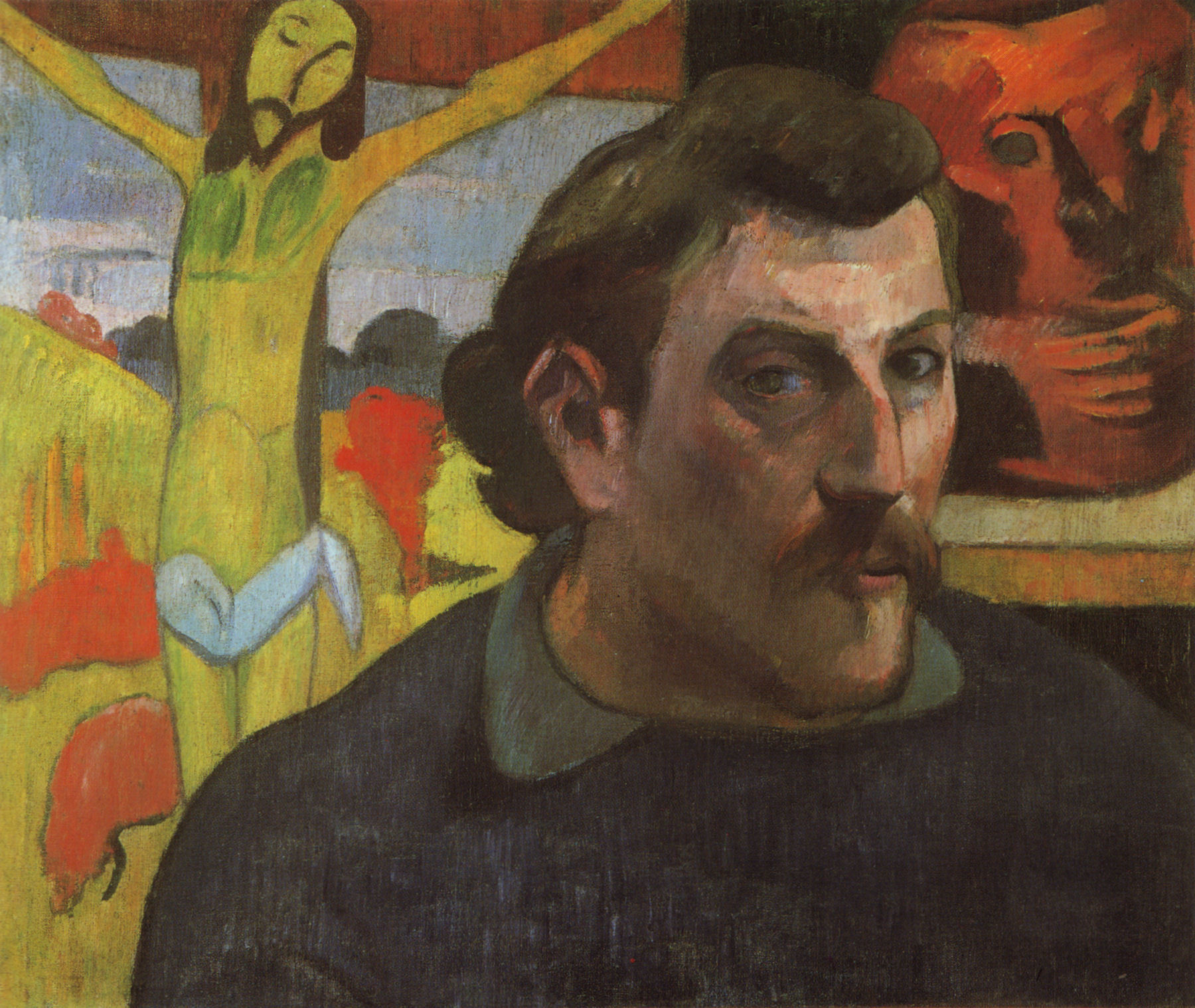I have just finished a severed kanak [Pacific Islander] head, nicely arranged on a white cushion, in a palace of my invention and guarded by women also of my invention.
--Paul Gauguin
Writing to his friend Daniel de Monfreid, Paul Gauguin referenced in an almost offhand way this startling painting of a decapitated human head, which he made during his first stay in Polynesia in the early 1890s. Real events, from Tahitian King Pomare V's death soon after Gauguin's arrival, to the artist having witnessed a public execution by guillotine several years earlier, likely influenced its dark subject matter. Gauguin added the Tahitian words "Arii" and "Matamoe" in the canvas' upper left. The first means "noble;" the second, "sleeping eyes," a phrase that implies "death."
Symbolist artists, including Gauguin, had a predilection for images of decapitated heads and any associated figures, such as Orpheus and John the Baptist. But in a more general sense, Gauguin also freely mixed Eastern and Western imagery. His obsession with the theme of death, which appears throughout his Tahitian paintings, is less a reference to spiritual beliefs or to what he saw around him than perhaps more significantly, how he viewed himself. Gauguin thought of himself as a martyr victimized by modern society, which compelled him to escape to a "primitive" culture.
Source: The J. Paul Getty Museum.
We encourage you to see also "7 Surprising Masterpieces From J. Paul Getty Museum That Will Blow Your Mind" on DailyArt Magazine!
Guys, today our premium features which you can buy on iOS version of the app costs $1.99 instead of the usual $4.99. It's a one day promo! Remember that every in-app purchase you buy is a great financial support for us ;) For more info just tap "Get premium features". See you tomorrow!


 Paul Gauguin
Paul Gauguin